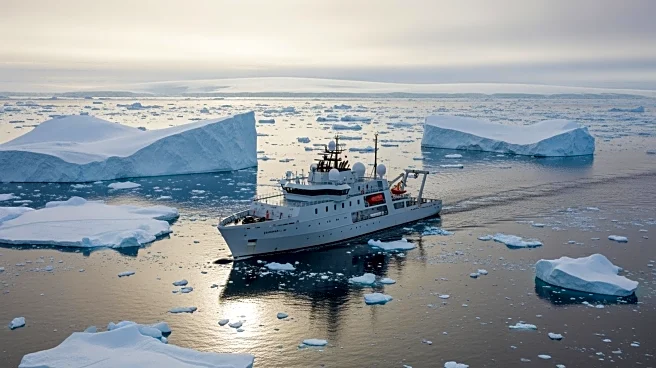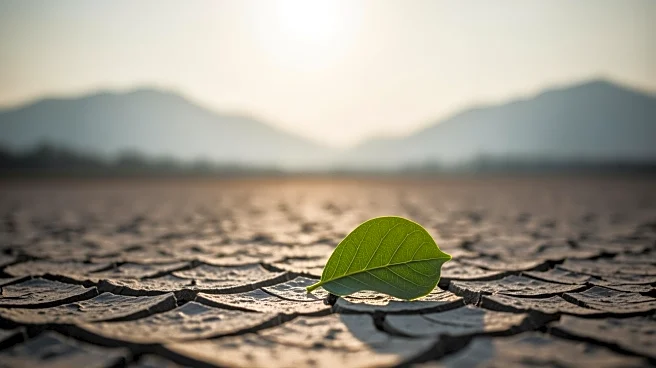What's Happening?
Recent studies have revealed that underwater 'storms' are significantly contributing to the melting of the Thwaites glacier's ice shelf in Antarctica. These storm-like vortices, known as submesoscale features,
form when waters of different densities or temperatures collide, similar to atmospheric hurricanes. These vortices can become trapped under ice shelves, pushing cold surface water outward and drawing warm deep water upward, which accelerates ice melt. The Thwaites glacier, often referred to as the 'doomsday' glacier, is losing ice at an alarming rate, with these underwater storms accounting for 20% of the total melt. This phenomenon raises concerns about underestimating future sea level rise.
Why It's Important?
The Thwaites glacier plays a critical role in global sea level regulation. Its rapid melting could lead to significant sea level rise, impacting coastal communities worldwide. Understanding the mechanisms behind its melting, such as the role of underwater storms, is crucial for accurate climate modeling and prediction. As the climate warms, these underwater storms are expected to intensify, potentially leading to more ice melt than currently anticipated. This underscores the need for enhanced observation and research to better quantify these effects and inform global climate policy and adaptation strategies.












